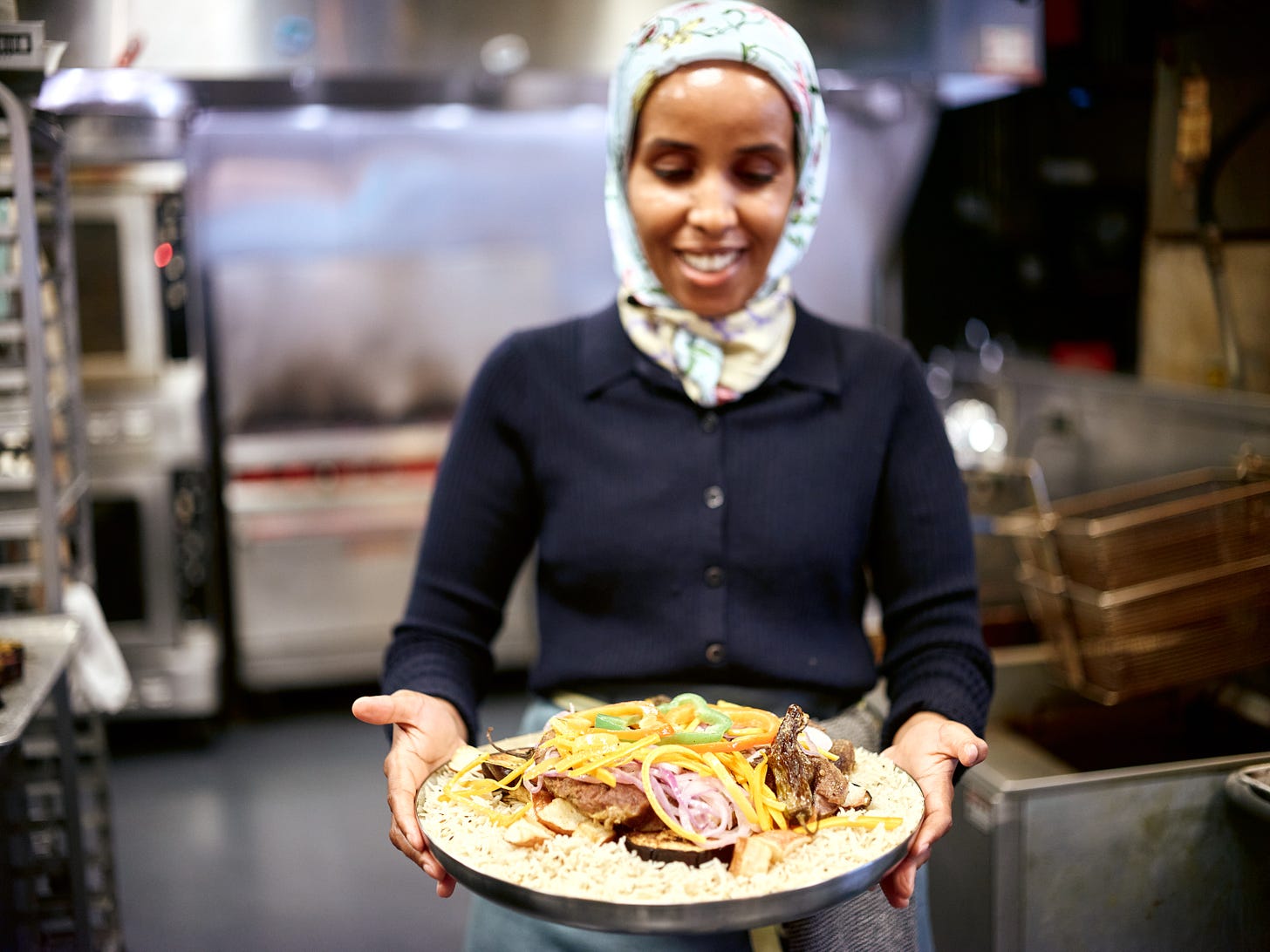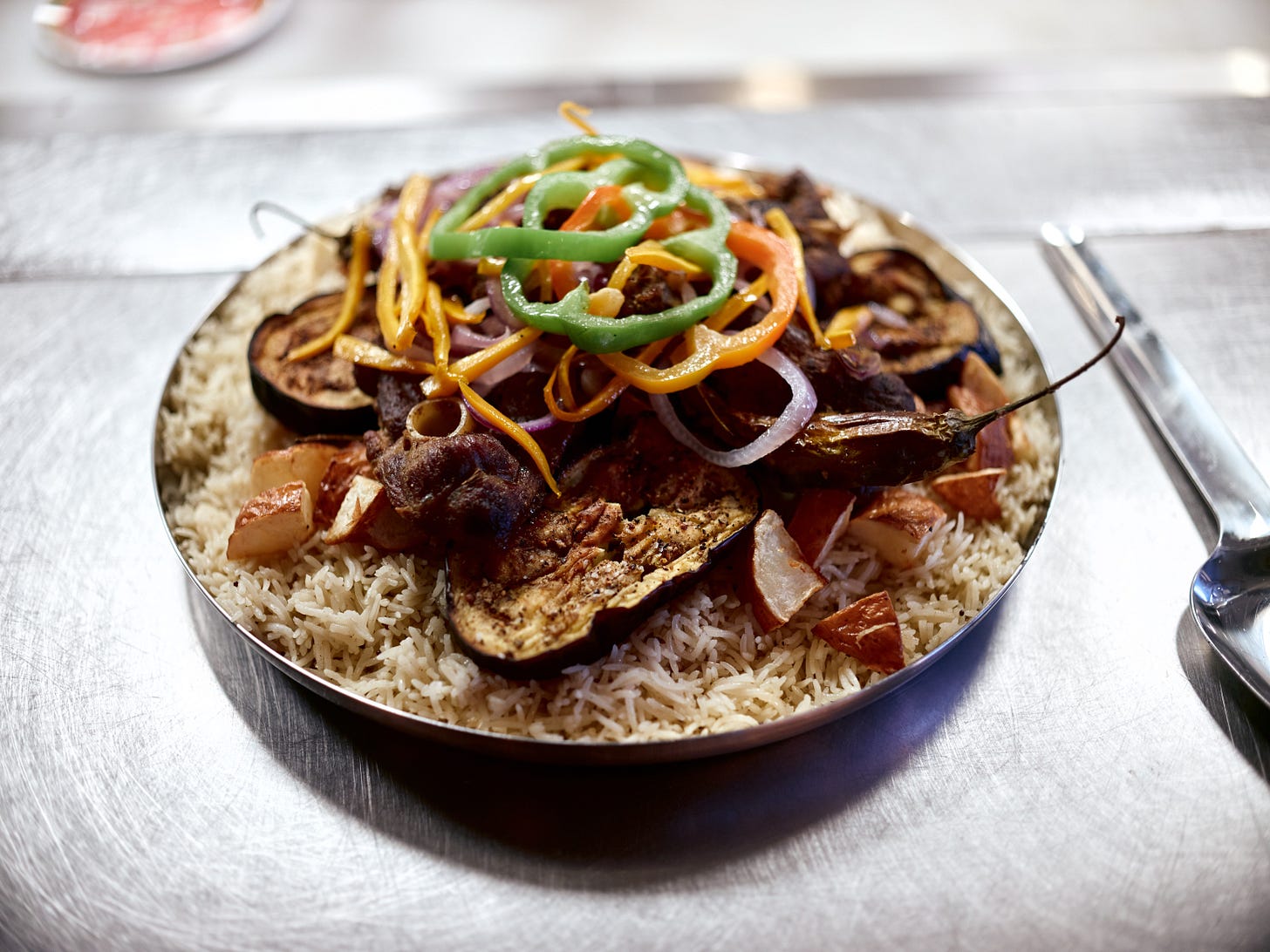“I want to go home..
But I don't know where home is
If you are no longer there
Does it still have laughter?
Where is my home?
Does it still live in your feet?
Are you there?
Are you here?
I want to come home to you.
I feel like i could walk from here to you barefoot - and barebacked
Across the 7 seas - maybe on the back of humpback whale - I hear they are home now
I feel like I could cross realms for you - one to the next to find you as you did for me
I could find you in the center of the ocean - your body calls to me
The line where the sun comes home to the earth calls to me
The rocky roads, the white soil, the tall grass call to me
The words you taught me call to me; they come hunting/ calling to me
Oh! How I miss when my home lived in your blessed feet
Maybe now I will move my agal to my feet…. Or to Muzamil’s
Will you still call to me?
Tell me stories - teach me some more
I will cross realms to come to you
I tell Allah about you everyday, as you told him about me
I say “Ya Raab, Ya Noor, light her way,
She did right by me, bless her and protect her”
As she reads the above poem to a group of a dozen people at BIPOC Foodways Alliance Table gathered to eat her fragrant barris iyo hilib (literally “goat and rice”)– Maryan Abdinur begins to weep.
Silently, her 11-year-old son Muzamil rises from his place at the table to join, and embrace her. They stand as a singular pillar, until she finishes.
“This poem might make someone cry,” she said before the reading.
Turns out, that someone was her.
Minnesota has the largest population of Somalis in the country, estimated at nearly 90,000.
Like many of those, Maryan settled here after fleeing the Somali Civil War, which has been ongoing in some capacity since the 1980’s.
“I don’t think there’s a Somali who can answer what is causing the war,” she says. “I don’t think there are any two tribes who agree on what happened.” But one thing seems clear: much of the tumult is a legacy of colonialism.
“Italian colonizers described it as the most un-colonizable African nation that they've come in contact with,” she goes on. “The British brought soldiers from India to reinforce their rule, and then the north was colonized by the French. And so you have three different colonizers, and three different regions unique in their way.”
But before it was sliced up by colonialism, Maryan knew her home, on the border of what is now Somalia and Kenya, as Arlaadi, or “our lands/the lands”.
Perpetually dressed modestly, in a hijab and shirt buttoned up to the neck, Maryan’s nutmeg skin is smooth as butter, her demeanor ebullient, with eyes that dance the jitterbug as she tells stories– always telling stories. She bubbles when she talks, bouncing with the energy of a kid describing a favorite toy. She comes by it honestly. Her grandmother, Hawa, and the rock of Maryan’s childhood, was the same.
“We would always want her to make the morning canjeero (fermented, spongy flatbread) she made it lopsided and we got to laugh about it! Hers was a little bit more ugly than the perfect circle that my aunts would make, and she would entertain us in that way.”
The twinkle in her grandmother’s eye often shielded Maryan from the ugly realities of the war that ultimately encroached on her childhood.
“I remember we would always run out of sugar first,” she recalls of the gridlock that would ultimately force her family into hunger.
“Then, we would run out of rice. Until we were down to just corn.”
But her grandmother never let her feel the squeeze. Instead, she remembers Hawa gathering all of the children in the morning and letting them choose.
“Today, do you want the white corn, or the yellow?”
In a burst of happy energy they would choose, and her grandmother would commence to using the corn of their choice in creative ways throughout the day: canjaro in the morning, soor (Somalia’s grits) for lunch, and then Cambuulo (corn mixed with beans) for dinner. The kids thought that they were living in the embrace of abundance.
In reality, the war was on, and there was a drought. Two years prior to the drought, a monsoon drowned the topsoil with saltwater, making agriculture difficult. There was hardly anything in the markets to buy for food.
“I’ll never forget how you would go to a stall to buy onions, but the stall only has one onion, and so each family gets a piece– because they wouldn't sell you a whole one, even if you could pay for it.”
But as a child, Maryan thought of these market outings as “adventures.” She remembers a moment when her grandmother managed to find some sorghum, their most important grain, which was in dire supply.
“She giggled. She said ‘Look what I found!’ It was maybe two handfuls, freshly ground. And her joy of just finding that to be able to make a small dish or something, and I remember we went home, she made it into this really watery porridge for all of us.”
And, she extended this generosity of spirit to the entire community.
“There would only be enough cooking oil that you would need for the day. My grandmother would buy that small amount, and then she would find a community member who couldn't even buy that small amount, and then she would give a part of hers. Whatever that was in her hands belonged to everybody, and she truly believed that.”
As is the natural order of things, Maryan now truly believes that too. She shows it with the way she cooks, the way platters of rice– the grains individual and free-falling as snowflakes– get layered amply with halal goat, fried potatoes, roasted eggplant and carrot. She makes a lot out of a little, until the platters are piled so copiously that it seems like almost too much. There is somehow more than plenty, just as it was with her grandmother's corn, and her cooking oil.
The meal is inspired by Friday feasts in Somalia, when goats would be slaughtered to cook and share with the whole community after midday prayers.
Maryan was “an outdoor child,” ceaselessly overflowing with rambunctious energy, getting into all sorts of trouble. So her family did what savvy parents do everywhere– put her to work.
“We had a chef who would come and slaughter the goats, and I followed him everywhere. I was the runner between where the slaughter was happening and the kitchen. There’s some community members that would come and want the head, or there's some that would come and process the skin into leather– I was the one that would put it in bags and close it.”
It was some of her first training in the art of sharing.
The cooking pots were so huge, and the tiny Maryan could fit inside, so her aunts would lift her up and put her in. From there, she would scrub them clean.
“I was literally part of the pot! Scrubbing, like this wall. And I was happy.”
So barris iyo hilib is quite truly a part of Maryan. The smell of the leather, the heft of the goat heads, the perspective of being inside of the pot where the goat had just been bubbling away. To serve it is an offering from her body. The home that still resides within her.
And yet, home cannot be grasped quite so easily. Her grandmother passed away (Maryan calls it “transitioning to the ancestral plane”) after Maryan left Somalia when she was just 11, and they never had the opportunity to see each other again. Even when she thinks of that home, she knows it can never be. Not really.
“She’s not even home. Like, she's not. She is home, she's very there, but she's not home. Like, when I think about home, I think about going to her hut and seeing her, and as of right now, her hut is not even there. And to imagine what it would be like to walk into that home, have the familiarity. . . She trails off.
“And so how would I find it?”
While her connection to her home is bone-marrow deep– the way her grandmother described her grandchildren– as the marrow of her bones, Maryan says that “home is where my feet are,” the way her nomadic grandmother also described the true meaning of home.
For a nomad, she explains, the act of leaving is just as important as remaining.
”Lean into the lesson of leaving when you need to leave, and return when needed again. When you leave, it’s important that you leave things in conditions that others can grow with [as well as yourself[ because a nomad moves in a circular pattern.”
And so while Somalia will always be home, so equally is Minneapolis, she says.
“It’s really understanding and accepting that this is my life now. Being here and being in this way is not a bad thing. Like, yes, I would have loved to have grown up and raised my family in Somalia, but those opportunities are not available to me. But I also can do it here in a respectable way.”
She says that she has a “well-deserved” life here.
Many people, myself included, might assume that immigrants like Maryan only long for home. But, she says that for her, it isn’t so straightforward.
In Minneapolis, she has access to markets that carry the spices for her food. Somali language is spoken here. She can walk around and hear Somali music floating out of storefronts. And, she honors this land, and its original Indigenous stewards, just as she would honor her own homeland.
And yet, she calls herself, forever and always, “Somali as bananas” [bananas grow wild in Somalia and are famously served with every meal.]
“Hamdulillah, [All praise is due to Allah]” she grins.
“I’m on the other side. It feels really nice here.”
If you would like to be a guest at a BIPOC Foodways Alliance Table, click here!








